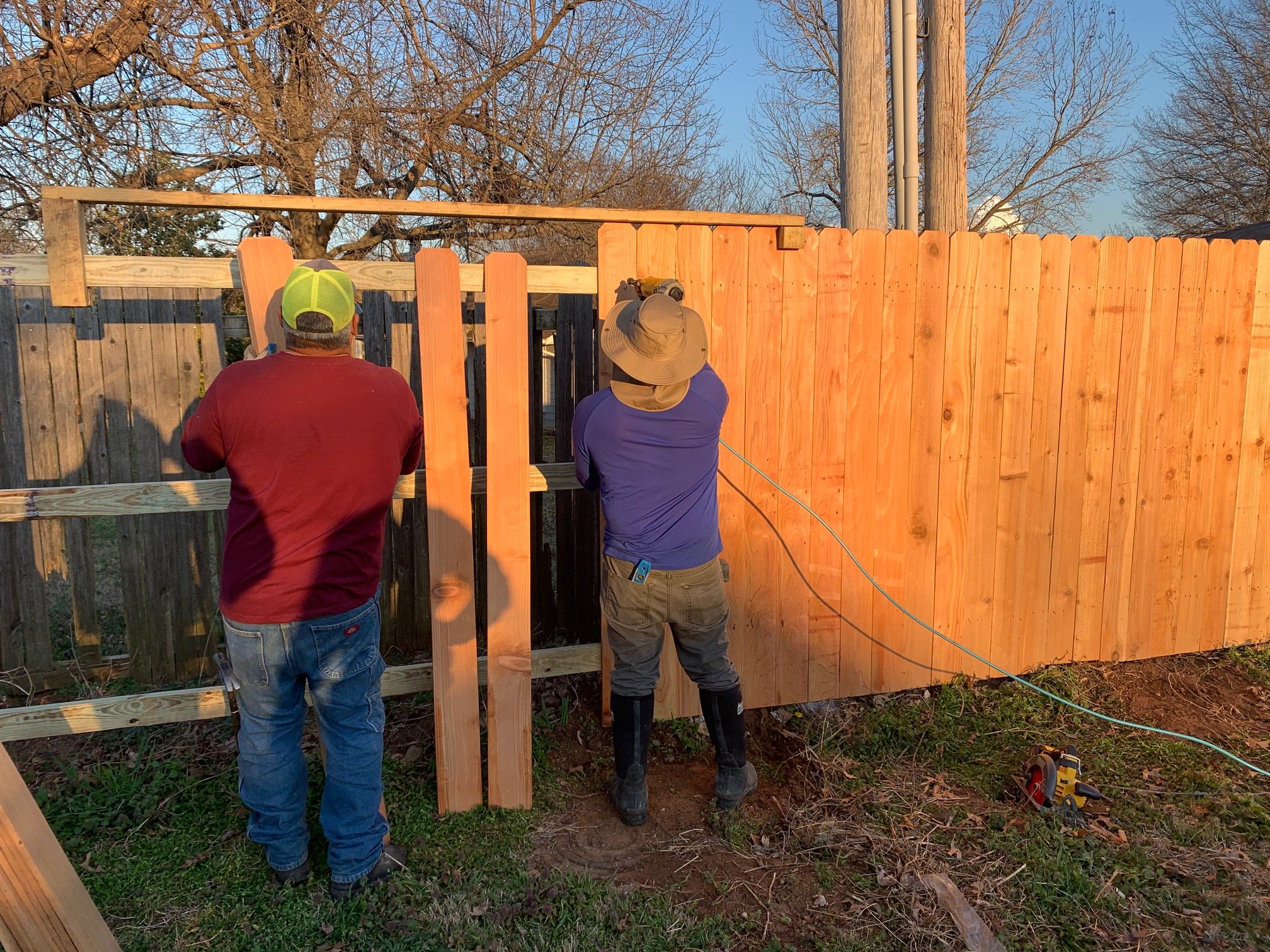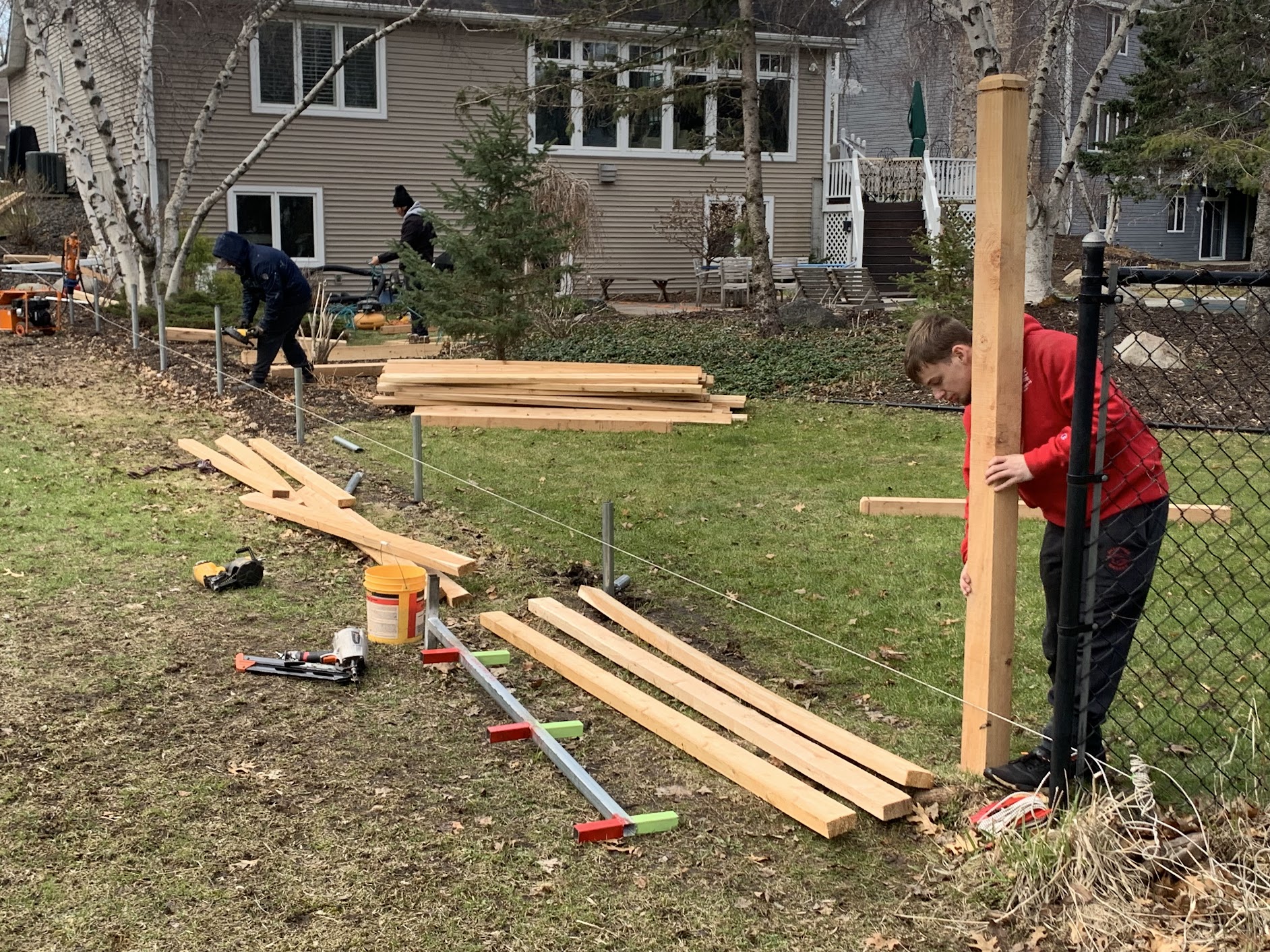What Homeowners Should Know About HOA Rules from Gadsden Fence
What Homeowners Should Know About HOA Rules from Gadsden Fence
Blog Article
The Ultimate List for Effective Fencing Installment Jobs
When you're planning a fencing installation job, it's essential to have a clear method in location. Beginning by defining your objective and goals, whether it's for privacy or protection (fence company near me). Understanding local guidelines can conserve you time and frustrations later. From there, picking the right materials is necessary for both sturdiness and aesthetics. There's even more to take into account prior to you damage ground. Allow's explore the steps that will guarantee your task is a success
Define Your Purpose and Objectives

Study Local Rules and Permits
Exactly how do you ensure your fence installation goes smoothly? Start by looking into regional laws and authorizations. Every area has certain legislations pertaining to fencing-- height, product, and placement can differ commonly. Consult your regional zoning office or building department to comprehend what's needed in your neighborhood.You might require a permit prior to you dig, especially if you're near residential property lines or utilities. Stopping working to stick to laws can lead to fines or perhaps needing to remove your fence.Also, take into consideration property owners organization (HOA) regulations if you stay in a neighborhood with one. They usually have extra standards that you'll need to adhere to.
Choose the Right Products
When selecting products for your fencing, think of resilience and just how they'll hold up versus the aspects. You'll additionally wish to strike a balance between aesthetics and functionality to guarantee your fencing looks terrific while offering its objective. Making the effort to pick the best products can make all the distinction in the longevity and look of your fencing.
Material Toughness Factors To Consider
As you choose products for your fencing, it's important to review their longevity, because various choices can significantly affect the durability and upkeep of your installment. Timber, while aesthetically pleasing, requires regular treatment to ward off rot and bugs. On the various other hand, plastic provides remarkable resistance to fading and breaking but can be much more costly upfront. Metal fences, like light weight aluminum or functioned iron, give toughness and durability, yet they may need periodic corrosion protection. Consider your local environment as well; extreme weather condition can affect material performance. Eventually, selecting the right durable material will save you time and money over time, ensuring your fence stands strong against the elements and decreases upkeep efforts. Pick carefully!
Visual and Useful Balance
While you could prioritize sturdiness when picking fencing products, accomplishing a visual and useful equilibrium is similarly important. Consider exactly how your option matches your home's style and the bordering landscape. For example, wooden fencings can provide beauty yet might require more upkeep, while vinyl provides a smooth, modern-day look with much less upkeep. Metal fencings, like wrought iron, can include elegance and safety, however make sure they fit the general ambiance of your home. Consider shade, texture, and style-- these components can enhance your visual allure. Always keep your neighborhood climate in mind, as it affects material efficiency. Ultimately, choose products that not only serve their objective yet also boost your exterior area's visual charm.
Strategy Your Fence Layout and Design
A strong strategy for your fencing layout and design is necessary to ensure a successful setup. Beginning by determining the objective of your fencing-- whether it's for privacy, security, or looks. Next off, think about the design that matches your home and landscape. You'll desire to select products that fit your budget and upkeep preferences.Measure your lawn accurately, marking the limits where the fence will certainly go. Think of the elevation and spacing of the posts, ensuring they meet local policies. Sketch a format to imagine just how your fencing will look, remembering of any type of slopes or obstacles. Don't forget to represent gateways for simple gain access to. Finally, consult with your neighbors if the fence affects common residential or commercial property lines, advertising goodwill and preventing conflicts. By very carefully preparing your design and format, you set the phase for a smooth installation process and a fencing that satisfies your requirements.
Prepare Your Website for Installment
Prior to you start mounting your fence, you require to prepare the website. Clear the area of any type of barriers, see to it you understand your residential property lines, and examine neighborhood policies to avoid any problems. Taking these actions will establish a solid foundation for your fence job.
Clear the Location
Clearing the location is essential for a smooth fencing installation. Begin by removing any type of challenges like rocks, particles, or old secure fencing products. This makes it easier for you and your team to work effectively. Next, cut back any disordered greenery, such as shrubs or tree branches, that might hinder the installment process. If you have any type of outdoor furniture or designs near the fence line, relocate those out of the way. This not only protects against damage yet likewise assures your work space is risk-free. Take a moment to examine for any kind of below ground utilities. Call your local energy company if you're not sure. A clear, organized site sets the stage for a successful and hassle-free setup.
Situate Home Lines
Recognizing your property lines is vital to confirm your fencing is mounted appropriately and legally. Beginning by assessing your residential or commercial property deed, which typically includes a survey or map outlining the limits. If you do not have a study, think about hiring a specialist property surveyor. They'll note the specific lines, aiding you avoid disagreements with next-door neighbors. As soon as you have actually developed your limits, use risks or flags to describe the area where your fencing will go. This aesthetic help not just helps you stay within your limitations yet also gives a clear reference for your installment. Remember, clear home lines can conserve you from potential legal issues and neighborly disputes later, so make the effort to confirm accuracy prior to continuing.

Check Local Laws
As soon as you have actually developed your home lines, checking regional regulations is the following action in preparing your site for installation. Neighborhood laws can dictate fence height, materials, and even positioning. Start by contacting your regional zoning workplace or seeing their website to collect needed details. Make sure to inquire regarding licenses, as lots of locations require you to obtain one before you start any installation. Also, explore any type of house owner organization (HOA) guidelines that may use in your area. Understanding these guidelines upfront can conserve you from prospective fines or the requirement to eliminate your fencing later on. Taking these steps warranties your fence abides with neighborhood standards and helps you stay clear of migraines down the roadway.
Install Your Fence Properly
When you're ready right here to install your fence, assuring proper positioning and depth is necessary for its long life and security. Begin by marking the format with risks and string to imagine the fencing line. Make certain your messages are spaced equally, commonly 6 to 8 feet apart, depending upon your fencing type.Dig blog post holes at least one-third the size of the articles, and consider much deeper openings for included security, specifically in gusty areas. Usage gravel near the bottom for drainage and established the articles in concrete, assuring they're degree and plumb.While securing the panels, maintain them straight and flush with the blog posts. If you're setting up an entrance, verify the dimensions to ensure it swings easily. After whatever's in position, go go to this site back and verify that your fencing looks even and professional. Making the effort to set up properly now will save you headaches later!
Preserve Your Fencing for Long life
To keep your fencing looking fantastic and standing strong for many years, regular maintenance is vital (gadsden fence company). Start by evaluating your fencing at the very least twice a year. Check for any indications of damages, such as loosened boards or rusted hardware. If you spot issues, address them without delay to avoid more deterioration.Cleaning your fence is equally vital. Remove dirt, particles, and mold and mildew with a mild soap option and a soft brush. For wooden fencings, take into consideration using a sealant or tarnish every couple of years to safeguard versus wetness and UV rays.Don' t forget about plant life! Trim back any plants or shrubs that may be raiding your fencing, as they can create damages over time.Finally, keep an eye on the ground around your fencing. Keep correct water drainage to stop water pooling, which can weaken the foundation. By following these steps, you'll ensure your fencing stays attractive and functional for years to come
Regularly Asked Inquiries
For how long Does a Regular Fencing Installation Take?
A regular fencing setup typically takes one to three days, depending on the dimension and complexity of the project. You must take into consideration aspects like weather, terrain, and the type of materials you're making use of.

Can I Install a Fencing on an Incline?
Yes, you can set up a fencing on a slope. You'll need to readjust the fencing panels to follow the surface, ensuring stability and aesthetic appeals. Ensure to prepare very carefully to accomplish the best results.
What Tools Do I Need for Fencing Installment?
For fence installation, you'll need a message hole miner, degree, gauging tape, hammer, saw, and a power drill. Do not fail to remember security gear like gloves and goggles to secure yourself throughout the project.
How Do I Take Care Of Utility Lines During Installment?
Prior to digging, constantly contact your regional energy companies to locate other underground lines. Make use of an utility locator solution, mark the areas plainly, and avoid digging within those zones. It'll maintain you secure and protect against costly damages.
What Is the Ordinary Cost of Fencing Setup?
The average cost of fencing installment differs extensively, usually ranging from $1,500 to $4,000. Elements like products, labor, and place influence your total amount costs, so it's clever to obtain multiple quotes before making a decision.
Verdict
In summary, by following this ultimate list, you can assure a successful fencing setup task that satisfies your needs. Specifying your goals, comprehending guidelines, selecting the ideal materials, and preparing your site are all essential actions. As soon as your fencing is installed, continuous maintenance will keep it looking terrific and operating well for several years to come - Gadsden Fence. With mindful planning and focus to detail, you'll develop a fence that not just enhances your property but likewise supplies the personal privacy and protection you desire
Report this page